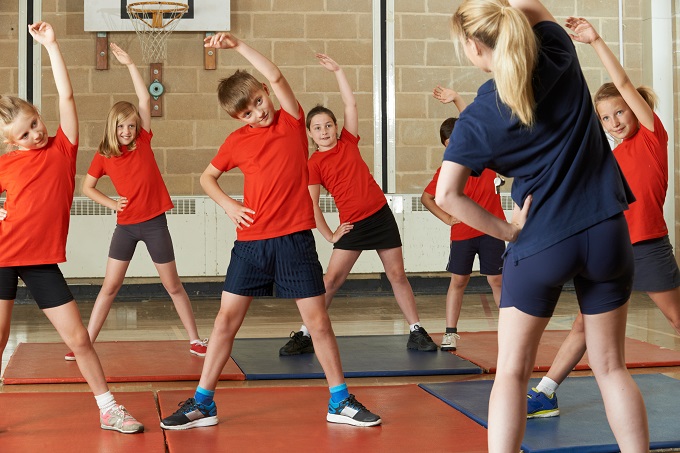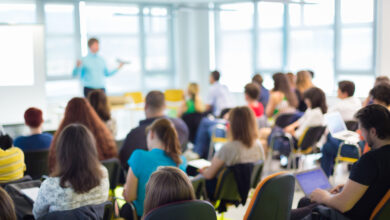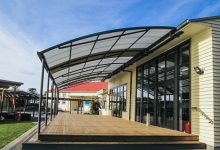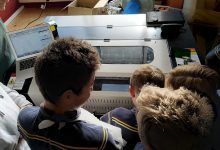It’s smart to get kids moving but how smart are your facilities?

Along with a long list of other health benefits, it has also been shown that kids who are more active are also smarter. Surely, for any school, this information is gold?
This article has been pulled from our extra-special Term 3 issue! Check out your school’s hard copy or find the digital version by clicking here.
When kids are inspired to move and improve their fitness, you are probably already aware that a reduction of obesity is one result; prevention of chronic disease is recognised as another, and you also know that having a good fitness regime and an interest in physical activity from a young age is essential in the development of lifelong healthy habits.

But were you aware that physical education can also improve your school’s academic results?
It’s true, the mind and body of a learner is entirely interconnected. Shouldn’t all teachers (not just the PE teachers and sports coaches) be invested in school fitness? Especially as fitness knowledge gained by kids will be shared with their families, it’s in the best interest of parents, whānau and the whole country to get behind any campaign or project that gets kids moving.
At a time when academic results were much more of a priority than physical education in school curriculums, growing research began to recognise the importance of a healthy body to a healthy, smart mind. Many studies link physical activity and improved cognitive function: neuroscience researchers have even shown that exercise can increase the size of children’s brains. A recent Australian study at the University of Canberra called, ‘The effect of acute treadmill walking on cognitive control and academic achievement in preadolescent children’, also found fitter children had better cognitive function and higher academic scores.
New Zealand’s Ministry of Education recognised the important role schools play in fostering young people’s interest in physical activity when they included effective physical education, recreation and sport in their school programme for all ages and abilities. You can find Physical Activity for Healthy, Confident Kids: Guidelines for Sustainable Physical Activity in School Communities available online.
SPARC, the Ministry of Health, and the Ministry of Education, in consultation with the Ministry of Youth Development agreed on these guidelines for children and young people. It recommends that children should: “Throughout each day, do sixty minutes or more of moderate to vigorous physical activity; be active in as many ways as possible, for example, through play, cultural activities, dance, sport and recreation, jobs, and going from place to place; be active with friends and whānau, at home, school, and in their communities; spend less than two hours a day (out of school time) in front of the television, computers, and game consoles.”
The guideline also suggests that limited facilities or resources should not place limits on physical education and co-curricular physical offered. “It is important, though, to ensure that all available facilities, equipment, and other resources are managed to allow easy access and maintained in a usable and safe condition.”
Researchers are still finding out what types of activities are the most effective for students, but current guidelines encourage a “full range of physical activities during school time, provided in a safe physical and emotional learning environment” to cater to a “range of abilities and cultures”.
New Zealand already has a long and strong heritage of physical activity with widespread participation and great success in team sport, such as rugby and cricket, this attitude and pride must be cherished and continued. Be warned that the vast choice of passive leisure activities (from a multitude of technologies) is a huge threat to this generation’s interest and participation in physical activities, more than any previous generation. The biggest challenge that faces teachers is to motivate kids to move, rather than sit in front of a screen or gadget.
New Zealand has seen a trend in the last several years towards the installation of fitness studios and gyms inside school sports complexes. Along with a variety of outdoor equipment it gives PE teachers a wider range of physical education equipment to encourage all kids to keep active.
The Ministry of Education’s guidelines for ‘Designing schools in New Zealand’ also talks about the importance of whānau, involvement in planning halls or multi-purpose buildings used for indoor sports or gym-based learning activities. “Halls are frequently used by the community during non-schooling hours either as meeting venues or for weekend sporting activities. Consider the ease of community access against the ability to secure this away from other school buildings on the site.”
Improving student’s fitness tips…
Physical education trends have developed recently to incorporate a greater variety of activities. introducing students to activities like: skipping, bowling, walking/hiking, or Frisbee at an early age to help students develop a love of physical activity. It seems that offering variety and choice promises the best chance of inclusion.
Some teachers have incorporated stress-reduction techniques such as yoga and deep-breathing. And some include non-traditional sports hoping to provide extra motivation to increase their students level of activity while students also learn about different cultures.
Encourage partnerships with the local community.
When equipping your fitness centre contact an expert school fitness equipment supplier/provider to help you to assess your needs, create a plan/itinerary of equipment that is above all safe and strong, fits in your space and offers the flexibility of equipment to encourage the inclusion of kids of ages and abilities.
Industry opinion from Amber & Rob Holah at Industrial Athletic:
Tell us why is fitness so important?
One of the most important things is instilling a foundation of strength in Kiwi kids as the future of New Zealand in sport, health and fitness – especially for prevention of injuries and obesity. Effective fitness equipment teaches kids about the importance of overall wellbeing, in particular how to use their body as the machine rather than using ‘machines’.
Our main driver for wanting to get involved in schools was discussions we had with key strength and conditioning coaches – kids were arriving completely ill prepared with zero skillset or movement pattern awareness – they were having to break them down and start again. We recognised that the kid’s range of motion and techniques needed to be improved and addressed.
What is the most important thing to remember when equipping a school fitness area?
It is important to fit out your school with quality strength and conditioning equipment, that suits kids who are just looking to develop a base level of fitness, through to children focusing on the demands of high performance sport.
Have you noticed any recent student fitness trends?
Yes, the use of the human body as the machine, rather than the usual suspect fitness ‘machines’ (moving parts). We are seeing more and more kids starting functional strength and fitness programmes and getting into things like Olympic weightlifting (especially young girls), which is awesome as it’s not often at the forefront of children’s minds like rugby or cricket – despite functional fitness giving one of the best bases of strength for other sports.
Schools benefit from Industrial Athletic custom designProvide customised gym fit-out solutions to schools that seek results from an environment that “inspires constant improvement, functional strength and fitness for everyday health and performance,” says Industrial Athletic owner Amber Holah.
“We can help with every step in the process including your layout, photo realistic designs, equipment priorities, budgeting and school specific finance too. We can provide everything – from the racks and the barbells, to the rehabilitation gear that will teach athletes of all levels to prevent injuries from a young age.”
|









